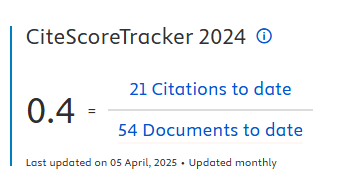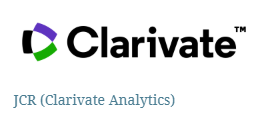Relação entre cultura organizacional e inovação empresarial em micro e pequenas empresas
DOI:
https://doi.org/10.5585/iji.v10i4.21166Palavras-chave:
Cultura organizacional, Inovação, Micro e pequenas empresas.Resumo
Objetivo do estudo: Analisar a relação entre a cultura organizacional predominante e a capacidade de inovação empresarial nas Micro e Pequenas Empresas (MPEs).
Metodologia: Trinta MPEs foram selecionadas para este estudo. O modelo cultural organizacional foi identificado por meio do questionário OCAI, e o radar de inovação modificado classificou o grau de inovação. O teste de D'Agostinho (p<0,01) e a correlação de Spearman foram utilizados para avaliar a normalidade e identificar a relação entre as variáveis, respectivamente.
Originalidade/Relevância: O questionário OCAI e o radar de inovação são instrumentos de investigação que ainda não foram empregados juntos em estudos relacionados ao contexto de MPEs, segundo a revisão narrativa da literatura realizada.
Resultados: Os modelos de cultura organizacional predominantes nas trinta empresas participantes deste trabalho foram identificados como tipos de clãs, hierárquicos e de mercado por meio do questionário OCAI. Os resultados obtidos indicam que a cultura organizacional predominante é complementada por características de outras culturas em maior ou menor grau. Além disso, a maioria das empresas apresentou um baixo grau de inovação. Encontramos uma relação forte e positiva entre as variáveis, ou seja, o grau de inovação aumenta com a melhoria da cultura organizacional predominando no contexto das trinta MPEs estudadas.
Contribuições teóricas/metodológicas: A estrutura de coleta e tratamento de dados deste estudo pode ser replicada em outros municípios ou regiões.
Contribuições sociais/para a gestão: Este estudo fornece uma estrutura para avaliação da relação entre a cultura organizacional e o grau de inovação nas MPEs.
Downloads
Referências
Aboramadan, M., Albashiti, B., Alharazin, H., & Zaidoune, S. (2020). Organizational culture, innovation and performance: a study from a non-western context. Journal of Management Development, 39(4), 437–451. https://doi.org/10.1108/JMD-06-2019-0253
ASN. (2022). Sebrae-SP promove Semana do Empreendedor no Vale do Paraíba e Litoral Norte. Retrieved April 29, 2022, from https://sebrae-sp.jusbrasil.com.br/
Büschgens, T., Bausch, A., & Balkin, D. B. (2013). Organizational Culture and Innovation: A Meta-Analytic Review. Journal of Product Innovation Management, 30(4), 763–781. https://doi.org/10.1111/jpim.12021
Çakar, N. D., & Ertürk, A. (2010). Comparing Innovation Capability of Small and Medium-Sized Enterprises: Examining the Effects of Organizational Culture and Empowerment. Journal of Small Business Management, 48(3), 325–359. https://doi.org/10.1111/j.1540-627X.2010.00297.x
Cameron, K. S. (2009). An Introduction to the Competing Values Framework. In K. S. Cameron & R. E. Quinn (Eds.), Organizational culture white paper (1st ed., Vol. 3, p. 4). Haworth.
Cameron, K. S., & Quinn, R. E. (1999). Diagnosing and changing organizational culture: Based on the competing values framework. (Addison-Wesley series on organization development, Ed.) (1st ed.). Massachusetts: Addison-Wesley.
Cameron, K. S., & Quinn, R. E. (2006). Diagnosing and changing organizational culture: Based on the competing values framework. (The Jossey-Bass business & management series, Ed.) (2nd ed.). San Francisco: John Wiley & Sons.
Cameron, K. S., & Quinn, R. E. (2011). Diagnosing and changing organizational culture: Based on the competing values framework. (Jossey-Bass, Ed.) (3rd ed.). San Francisco: John Wiley & Sons.
Carvalho, G. D. G., Almeida, M. C. A. dos A., Quandt, C. O., Carvalho, H. G., Westarb Cruz, J. A., & Veiga, C. P. (2016). Estrutura de agrupamento das dimensões do radar da inovação de micro e pequenas empresas no Brasil. Espacios, 37(23), 19.
Choi, Y. S., Seo, M., Scott, D., & Martin, J. (2010). Validation of the organizational culture assessment instrument: An application of the Korean version. Journal of Sport Management, 24(2), 169–189. https://doi.org/10.1123/jsm.24.2.169
CNI. (2015). Pesquisa sobre Inovação no Brasil. Retrieved from https://static.portaldaindustria.com.br/legacy/app/conteudo_18/2015/05/12/8750/1205-PesquisasobreInovao.pdf
Cohen, J. (1992). Statistical Power Analysis. Current Directions in Psychological Science, 1(3), 98–101. https://doi.org/10.1111/1467-8721.ep10768783
Deshpande, R., Farley, J. U., & Webster, F. E. (1993). Corporate Culture, Customer Orientation, and Innovativeness in Japanese Firms: A Quadrad Analysis. Journal of Marketing, 57(1), 23. https://doi.org/10.2307/1252055
Dulaimi, M., & Hartmann, A. (2006). The role of organizational culture in motivating innovative behaviour in construction firms. Construction Innovation, 6(3), 159–172. https://doi.org/10.1108/14714170610710712
Elkhouly, S. M. E., & Marwan, R. M. (2016). Defining the Organizational Culture That Drives Strategic Innovation in Micro, Small and Medium Enterprises in Egypt.
Gorzelany, J., Gorzelany-Dziadkowiec, M., Luty, L., Firlej, K., Gaisch, M., Dudziak, O., & Scott, C. (2021). Finding links between organisation’s culture and innovation. The impact of organisational culture on university innovativeness. PLoS ONE, 16(10 October), 1–21. https://doi.org/10.1371/journal.pone.0257962
Hazem, S. M., & Zehou, S. (2019). Organizational culture and innovation: A literature review. In Proceedings of the 2019 3rd International Conference on Education, Culture and Social Development (ICECSD 2019) (pp. 465–472). Paris, France: Atlantis Press. https://doi.org/10.2991/icecsd-19.2019.58
Heritage, B., Pollock, C., & Roberts, L. (2014). Validation of the organizational culture assessment instrument. PLoS ONE, 9(3), e92876: 1-10. https://doi.org/10.1371/journal.pone.0092879
Hofstede, G. (2011). Dimensionalizing Cultures: The Hofstede Model in Context. Online Readings in Psychology and Culture, 2(1). https://doi.org/10.9707/2307-0919.1014
Hofstede, G. H. (1991). Culturas e Organizações: Compreender a nossa programação mental (1st ed.). Traduzido por António Fidalgo: Edições Sílabo, Lda.
Kuswandi, Harijono, Handini, S., & Sanggarwati, D. A. (2017). Leadership Oriented: The Role Of Innovative Planning And Work Culture Toward Corporate Productivity. Archives of Business Research, 5(3). https://doi.org/10.14738/abr.53.2876
Martins, E. C., & Terblanche, F. (2003). Building organisational culture that stimulates creativity and innovation. European Journal of Innovation Management, 6(1), 64–74. https://doi.org/10.1108/14601060310456337
Morone, J. (1989). Strategic Use of Technology. California Management Review, 31(4), 91–110. https://doi.org/10.2307/41166584
Naranjo-Valencia, J. C., Jiménez-Jiménez, D., & Sanz-Valle, R. (2016). Studying the links between organizational culture, innovation, and performance in Spanish companies. Revista Latinoamericana de Psicología, 48(1), 30–41. https://doi.org/10.1016/j.rlp.2015.09.009
Nonaka, I., & Yamanouchi, T. (1989). Managing innovation as a self-renewing process. Journal of Business Venturing, 4(5), 299–315. https://doi.org/10.1016/0883-9026(89)90003-7
Oliveira, P. P. (2013). Um estudo sobre os efeitos do tipo de negócio, da inovação e do empreendedorismo sobre o sucesso das micro e pequenas empresas (Dissertação (mestrado)). Faculdade Campo Limpo Paulista – FACCAMP.
O’Reilly, C. A., Chatman, J., & Caldwell, D. F. (1991). People and Organizational Culture: a Profile Comparison Approach to Assessing Person-Organization Fit. Academy of Management Journal, 34(3), 487–516. https://doi.org/10.2307/256404
Rumsey, D. J. (2016). Statistics For Dummies (2nd ed.). E-book: Wiley.
Sawhney, M., Wolcott, R. C., & Arroniz, I. (2006). The 12 Different Ways for Companies to Innovate: Companies with a restricted view of innovation can miss opportunities. A new framework called the “innovation radar” helps avoid that. MIT Sloan Management Review, 47(3), 74–82. Retrieved from http://mitsmr.com/1qY1iJg
Sawhney, M., Wolcott, R. C., & Arroniz, I. (2021). Ways for Companies to Innovate. In E. Ween & R. Henzen (Eds.), Mastering the Circular Economy: A Practical Approach to the Circular Business Model Transformation. United Kingdom: Kogan Page.
Schein, E. H. (2006). Organizational Culture and Leadership. On J-B US non-Franchise Leadership (3rd ed.). John Wiley & Sons. Retrieved from https://books.google.com.br/books?id=xhmezDokfnYC
SEBRAE. (2018). Anuário do trabalho nos Pequenos Negócios: 2018 (11th ed., Vol. 1).
Shapiro, S. S., & Wilk, M. B. (1965). An analysis of variance test for normality (complete samples). Biometrika, 52(3/4), 591. https://doi.org/10.2307/2333709
Skarzynski, P., & Gibson, R. (2013). Building a systematic innovation capability. In Innovation to the core: a blueprint to transforming the way your company innovates (Vol. 1, pp. 229–253). Boston: Harvard Business School Press.
Spearman, C. (1904). The Proof and Measurement of Association between Two Things. The American Journal of Psychology, 15(1), 72–101. https://doi.org/10.2307/1412159
Stacey, G. S., & Ashton, W. B. (1990). A structured approach to corporate technology strategy. International Journal of Technology Management, 5(4), 389–407. https://doi.org/10.1504/IJTM.1990.025854
Tavares, S. R., & Fonseca, M. L. P. (2017). A geografia da atividade econômica no Vale do Paraíba - SP. In VIII Seminário Internacional sobre Desenvolvimento Regional (pp. 1–20). Retrieved from https://online.unisc.br/acadnet/anais/index.php/sidr/article/view/16183
Tellis, G. J. (2013). Unrelenting innovation: how to create a culture for market dominance (1st ed., Vol. 1). Jossey-Bass.
Tellis, G. J., Prabhu, J. C., & Chandy, R. K. (2009). Radical Innovation across Nations: The Preeminence of Corporate Culture. Journal of Marketing, 73(1), 3–23. https://doi.org/10.1509/jmkg.73.1.003
TERZIOVSKI, M. (2010). Innovation practice and its performance implications in small and medium enterprises (SMEs) in the manufacturing sector: a resource-based view. Strategic Management Journal, 31(8), 892–902. Retrieved from http://www.jstor.org/stable/40730754
Wudarzewski, G. (2018). Validation of Cameron and Quinn’s Organizational Culture Assessment Instrument (OCAI) in Polish conditions. European Journal of Management and Economics, 6(1), 79–105. https://doi.org/10.29015/ceejme.618
Downloads
Publicado
Como Citar
Edição
Seção
Licença
Copyright (c) 2022 Antonio Carlos de Oliveira Cruz Junior, Rogério Augusto Profeta, Valquíria Miwa Hanai-Yoshida

Este trabalho está licenciado sob uma licença Creative Commons Attribution-NonCommercial-ShareAlike 4.0 International License.
- Resumo 1523
- PDF (English) 858











